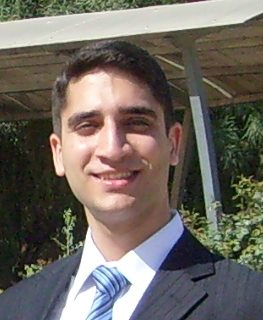Program Information
Computerized Framework for Marker-Less Localization of Anatomical Feature Points in Range Images Based On Differential Geometry Features for Image-Guided Radiation Therapy
M Soufi1*, H Arimura2 , K Nakamura3 , T Hirose4 , Y Umezu5 , Y Shioyama6 , F Toyofuku7 , (1) Kyushu University, Fukuoka, Fukuoka, (2) Kyushu University, Fukuoka, Fukuoka, (3) Hamamatsu University School of Medicine, Hamamatsu, Shizuoka, (4) Kyushu University Hospital, Fukuoka, Fukuoka, (5) Kyushu University Hospital, Fukuoka, Fukuoka, (6) Saga Heavy Ion Medical Accelerator in Tosu, Tosu, Saga, (7) Kyushu University, Fukuoka, Fukuoka
Presentations
SU-D-BRA-4 (Sunday, July 31, 2016) 2:05 PM - 3:00 PM Room: Ballroom A
Purpose: To propose a computerized framework for localization of anatomical feature points on the patient surface in infrared-ray based range images by using differential geometry (curvature) features.
Methods: The general concept was to reconstruct the patient surface by using a mathematical modeling technique for the computation of differential geometry features that characterize the local shapes of the patient surfaces. A region of interest (ROI) was firstly extracted based on a template matching technique applied on amplitude (grayscale) images. The extracted ROI was preprocessed for reducing temporal and spatial noises by using Kalman and bilateral filters, respectively. Next, a smooth patient surface was reconstructed by using a non-uniform rational basis spline (NURBS) model. Finally, differential geometry features, i.e. the shape index and curvedness features were computed for localizing the anatomical feature points. The proposed framework was trained for optimizing shape index and curvedness thresholds and tested on range images of an anthropomorphic head phantom. The range images were acquired by an infrared ray-based time-of-flight (TOF) camera. The localization accuracy was evaluated by measuring the mean of minimum Euclidean distances (MMED) between reference (ground truth) points and the feature points localized by the proposed framework. The evaluation was performed for points localized on convex regions (e.g. apex of nose) and concave regions (e.g. nasofacial sulcus).
Results: The proposed framework has localized anatomical feature points on convex and concave anatomical landmarks with MMEDs of 1.91±0.50 mm and 3.70±0.92 mm, respectively. A statistically significant difference was obtained between the feature points on the convex and concave regions (P<0.001).
Conclusion: Our study has shown the feasibility of differential geometry features for localization of anatomical feature points on the patient surface in range images. The proposed framework might be useful for tasks involving feature-based image registration in range-image guided radiation therapy.
Contact Email:

